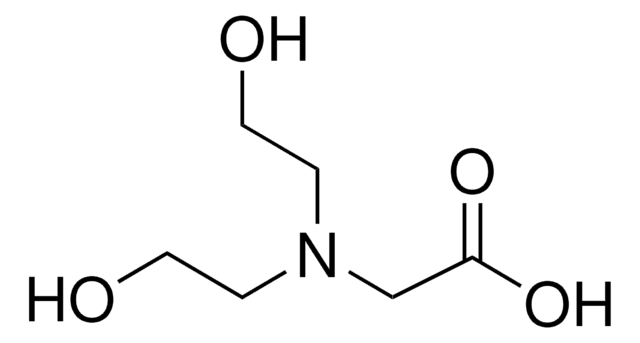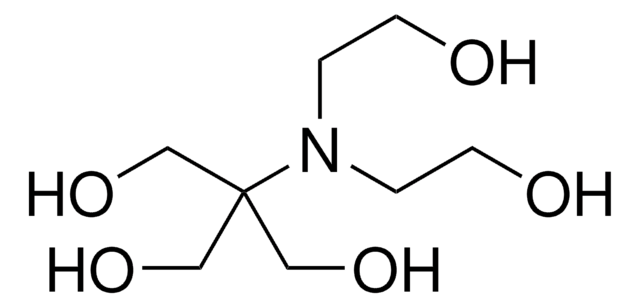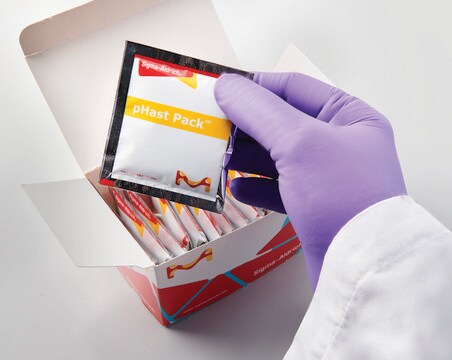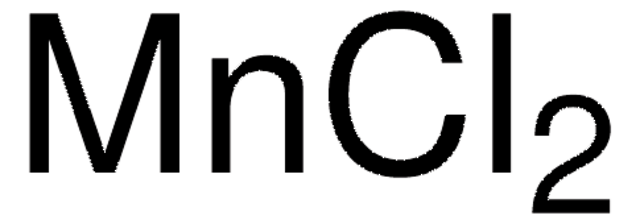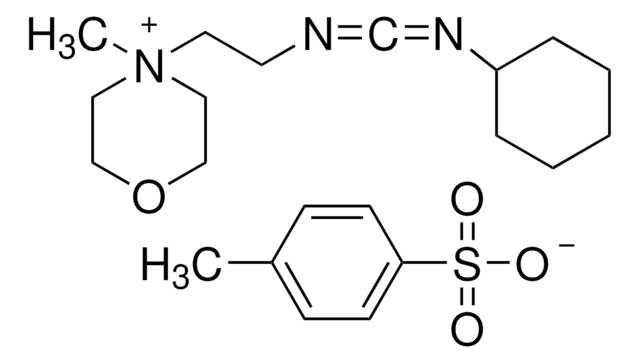B8660
BICINE
BioXtra, ≥99% (titration)
Synonym(s):
N,N-Bis(2-hydroxyethyl)glycine
About This Item
Recommended Products
product line
BioXtra
Quality Level
Assay
≥99% (titration)
form
powder
impurities
≤0.005% Phosphorus (P)
≤0.1% Insoluble matter
ign. residue
≤0.1%
pH
4.0-6.0 (1 M in H2O)
useful pH range
7.6-9.0
pKa (25 °C)
8.3
solubility
H2O: 1 M, clear, colorless
anion traces
chloride (Cl-): ≤0.05%
sulfate (SO42-): ≤0.05%
cation traces
Al: ≤0.0005%
Ca: <0.001%
Cu: ≤0.0005%
Fe: ≤0.0005%
K: ≤0.005%
Mg: ≤0.0005%
NH4+: ≤0.05%
Na: ≤0.005%
Pb: ≤0.001%
Zn: ≤0.0005%
absorption
≤0.05 at 260 in H2O at 1 M
≤0.05 at 280 in H2O at 1 M
application(s)
diagnostic assay manufacturing
storage temp.
room temp
SMILES string
OCCN(CCO)CC(O)=O
InChI
1S/C6H13NO4/c8-3-1-7(2-4-9)5-6(10)11/h8-9H,1-5H2,(H,10,11)
InChI key
FSVCELGFZIQNCK-UHFFFAOYSA-N
Looking for similar products? Visit Product Comparison Guide
Related Categories
Application
Legal Information
Storage Class Code
11 - Combustible Solids
WGK
WGK 3
Flash Point(F)
Not applicable
Flash Point(C)
Not applicable
Personal Protective Equipment
Choose from one of the most recent versions:
Already Own This Product?
Find documentation for the products that you have recently purchased in the Document Library.
Customers Also Viewed
Our team of scientists has experience in all areas of research including Life Science, Material Science, Chemical Synthesis, Chromatography, Analytical and many others.
Contact Technical Service